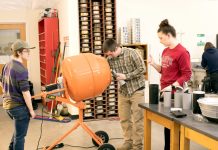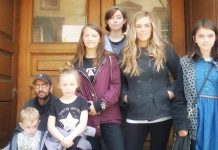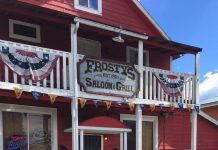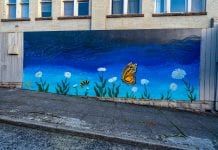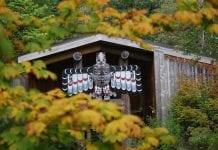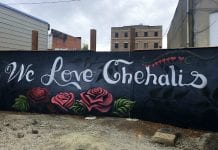The old wooden blockhouse stands, sentinel, near the entryway of Fort Borst Park. Its dark-brown logs blend seamlessly into the background, making it hard to spot as you drive by.
 The solitary fortification, with little in the way of signage, is easily overlooked. But locals know that it’s a treasure from Centralia’s earliest days. One of the last remaining wooden blockhouses standing in Washington state.
The solitary fortification, with little in the way of signage, is easily overlooked. But locals know that it’s a treasure from Centralia’s earliest days. One of the last remaining wooden blockhouses standing in Washington state.
“The Borst Blockhouse is one of only a few blockhouses [that] remain in Washington,” explains architectural conservationist, Harrison Goodall. “They are unique and they tell a visual story about early life here in Washington.”
Symbol of Strength
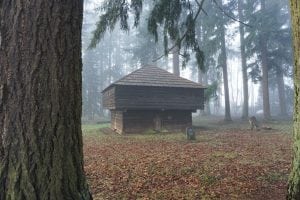
The blockhouse was constructed during the Puget Sound Indian War of 1855-1856. It was built by Captain Francis Goff’s Oregon recruits alongside several local homesteaders — Patterson Luark, James Lum and Joseph Borst.
“The blockhouse demonstrates the innovative construction methods of the 1800s,” says Centralia City Planner Hillary Hoke. These methods can be seen in the overall quality of the construction, the exacting dove-tail corners and close-fitting sides.
To the modern eye, the fort looks top heavy, but historically the projecting upper story had a useful purpose. It let defenders shoot out at enemies or pour water down on fires. The twelve beveled ports, or loopholes, create spaces for marksmen to fire out in a nearly a 180 degree circuit. To increase security, the blockhouse originally had no windows and only one heavy door.
To Daniel La Plaunt, chairman of Centralia Historic Preservation Commission, the Blockhouse is “as much a symbol today as it would it been in the 1860s. It embodies strength, safety and helpfulness to the people of our city.”
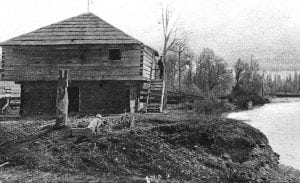
The Centralia Police Department agrees. They’ve used the image of the Borst Blockhouse on their patches since the 1960s.
Centralia’s Fort
After the Indian War, Joseph Borst bought the blockhouse from the government for $500. Borst installed windows and a second door in the upper story. The exterior staircase, seen in historic photographs, is gone today.
The Borst family used the blockhouse as a residence two times, once in 1857 and later in the early 1860s while the Borst House was built. The Borst’s second child, Ada, was born in the blockhouse in 1857.
After the Borst family moved to their new home, the blockhouse was used for grain storage and as a playhouse for the Borst children.
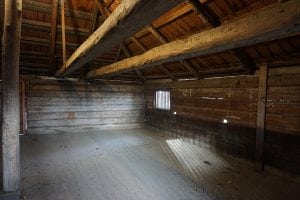
“The Borst Blockhouse is the quintessential symbol of Centralia,” says La Plaunt. “It’s a picture of who we are and where we’ve come from.”
The fort’s original location was on the other side of the park, near the junction of the Chehalis and Skookumchuck Rivers. The Chehalis River changed course in 1915, putting the blockhouse much closer to the banks. In 1919, when bank erosion threatened to topple it into the river, the fort was dragged on skids and rollers to Centralia’s Riverside Park. It remained there until 1922 when water again threatened it, this time in the form of floods. The blockhouse was moved for a second time, to its present location in Fort Borst Park.
In 1923, Allen Borst, Joseph and Mary’s youngest son, gifted the blockhouse to the City of Centralia.
Restoration and Conservation
After more than 160 years and two moves, the blockhouse is in need of restoration. There’s surface decay on the structure and some of the beams and floor plank ends have deteriorated.
“The Historic Preservation Commission is currently attempting to secure funds, donations and grant monies for the restoration of the blockhouse,” says Hillary Hoke. “Restoration of such a historically significant structure is very important to the Commission and the City.”
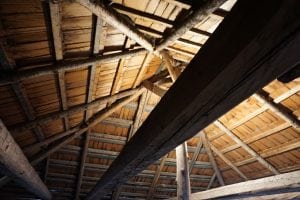
In 2016, Centralia commissioned architectural conservationist, Harrison Goodall, to create a preservation plan for the Borst Blockhouse. “From my perspective, I feel it is extremely important, and an obligation, to preserve these treasures for people in the future,” says Goodall.
If you’d like to learn more about the restoration, or view Goodall’s conservation plan, you’ll find the information on the City of Centralia’s website.
Over the years, the city has discussed moving the fort back to its original site, but this has not been done for fear of additional structural damage.
How to Visit
The Borst Blockhouse is located on the left as you drive through the main gates of Fort Borst Park. The fort is kept locked to prevent vandalism, but is sometimes open for tours during Summerfest on the Fourth of July.
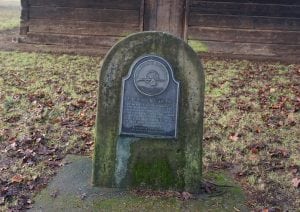
When visiting make sure to look at the historic marker placed directly in front of the main door. The plaque recognizes the Borst Blockhouse as an important site on Washington State’s Inventory of Historic Places.
“The Borst Blockhouse has been a cherished icon of the city for over a century,” says Harrison Goodall, “It, along with the Borst House and Schoolhouse, have defined the community’s past.”









